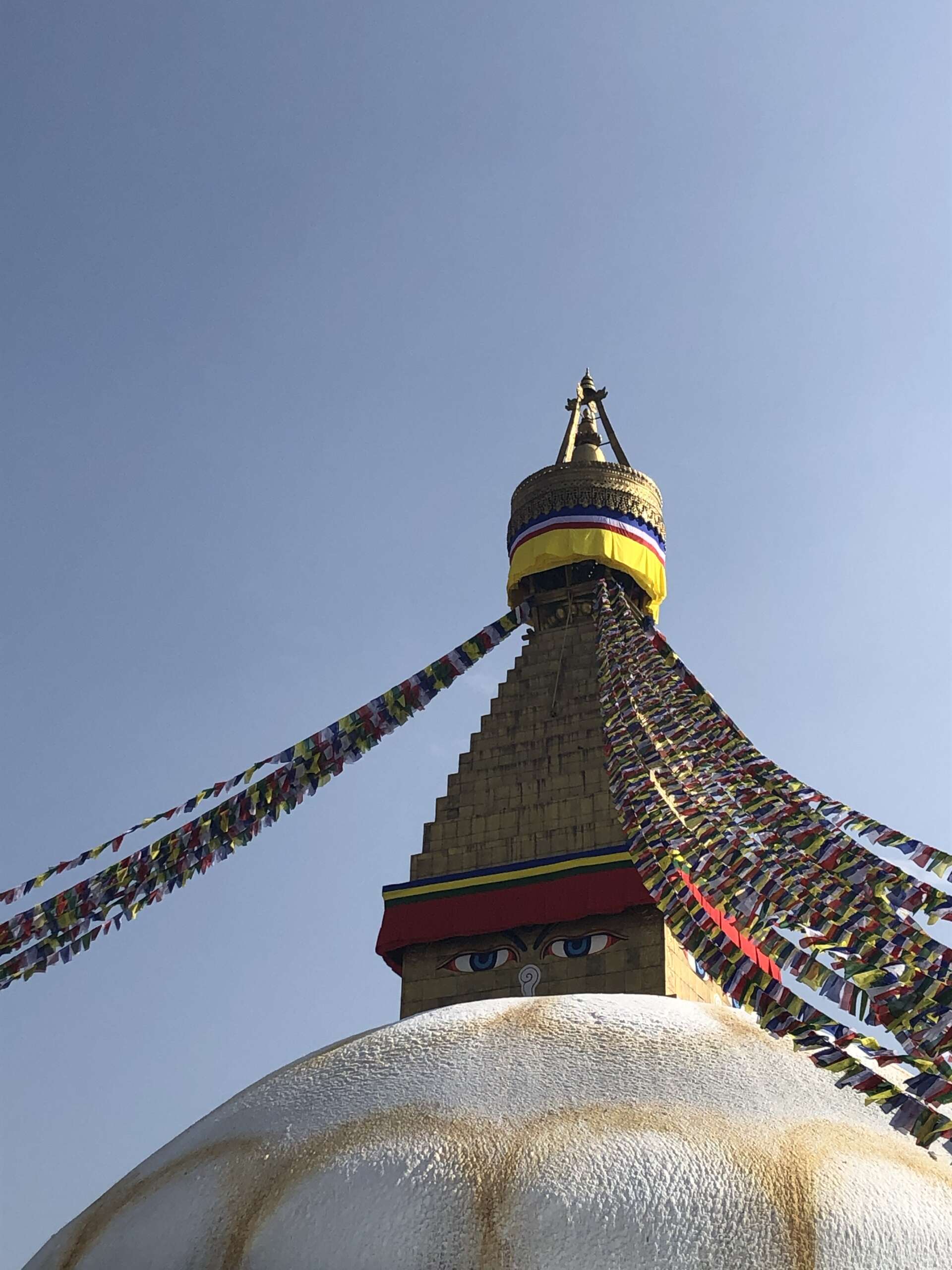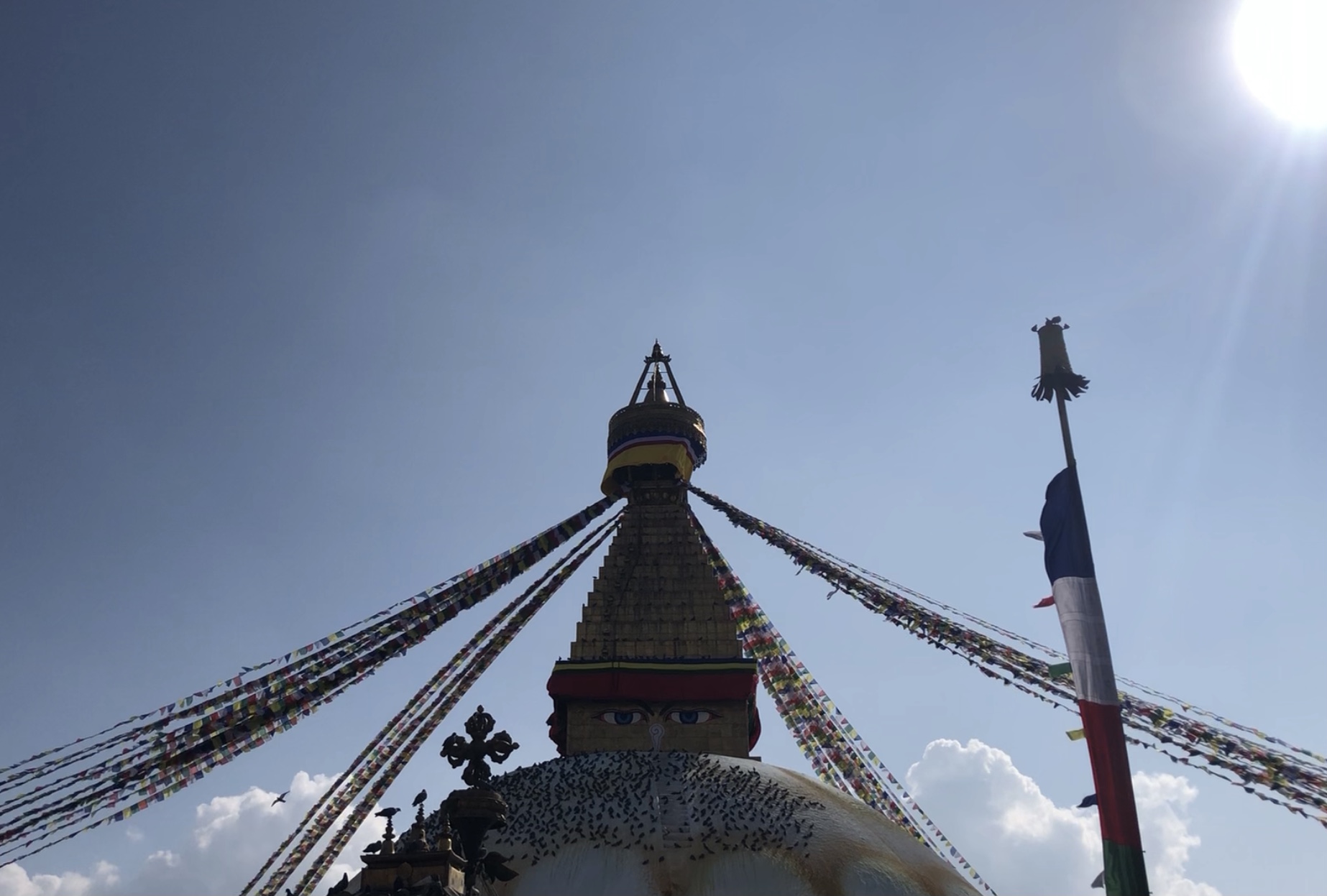I walked down a noisy road, passing by many clothing stores. Finally, I reached the outer grounds of the stupa, where the distinct scent of burning incense filled the air. There is something about it—instantly calming and enriching. It’s actually quite practical, too—purifying the senses before stepping onto the main stupa grounds. Haha. Anyway, it was a really beautiful day.
I walked slowly, a big smile on my face, feeling as if every cell in my body was cheering. Hurray!
I don’t remember exactly, but I think I cried as I stood before the stupa, confronted by Buddha’s Eyes. Those all-seeing eyes seemed to pierce right through me—gentle yet powerful—awakening something ancient and deeply universal. I stood there in quiet prayer for some time.
First impression from seeing Boudha Stupa
The Bouddhanath Stupa was built by a woman, a mother of four sons. Her name was Jadzima. She and her family lived humbly, raising chickens, yet this simple life did not diminish her profound aspiration: to build a stupa that would benefit countless beings, giving them an opportunity to accumulate oceans of merit. She went to the King of Nepal to ask for permission. Amazed by her virtuous aspiration, he gladly agreed and granted her land.
However, not everyone was happy about this. Many people judged her actions as inappropriate and went to the king, demanding that he make her stop. But he refused, saying he could not intervene.
And so, she gave birth to the most magnificent stupa in Nepal—one of the most spiritually significant sites in the world. Her story teaches us about the power of pure-hearted aspiration, an example of total breakthrough, guided by compassion and wisdom.
Thank you, Mother Jadzima, for opening the source of immeasurable kindness for countless beings—and for being that source yourself. May many more be blessed by it, and may your story continue to spread far and wide.

Now, countless colorful prayer flags flutter in the wind, carrying whispered mantras into the air. Their movement blends with the low murmur of chanting and the rhythmic creaking of prayer wheels, turned by devoted hands. Together, they create a landscape of an unshakable spiritual field, where Bouddhanath Stupa stands tall, its golden spire catching and radiating light like a beacon of peace and awakening.
Joyfully, I stepped forward and joined others in their walk around.
***
Here the title of this serie reveals its meaning.
The Vajra or Dorje (in Tibetan) is the symbol of the Vajrayana (diamond vehicle path) of Buddhism. The Sanskrit language defines Vajra as the “hard or mighty one” while in Tibetan, Dorje refers to to the ” lord of Stones”, which is equivalent to the hardness and the radiance of the Diamond. Hence, it is profound symbol of the impenetrable, immovable and in-destructive state of the enlightened mind, the Vajra mind.
from: https://enlightenmentthangka.com/blogs/thangka/profound-vajra-buddhism?srsltid=AfmBOopgljZj_nRKsYWk5ZdDuyIeprYPo3zGoUe3QJSB7h6KwZ56nkAk



13 Comments
Comments are closed.